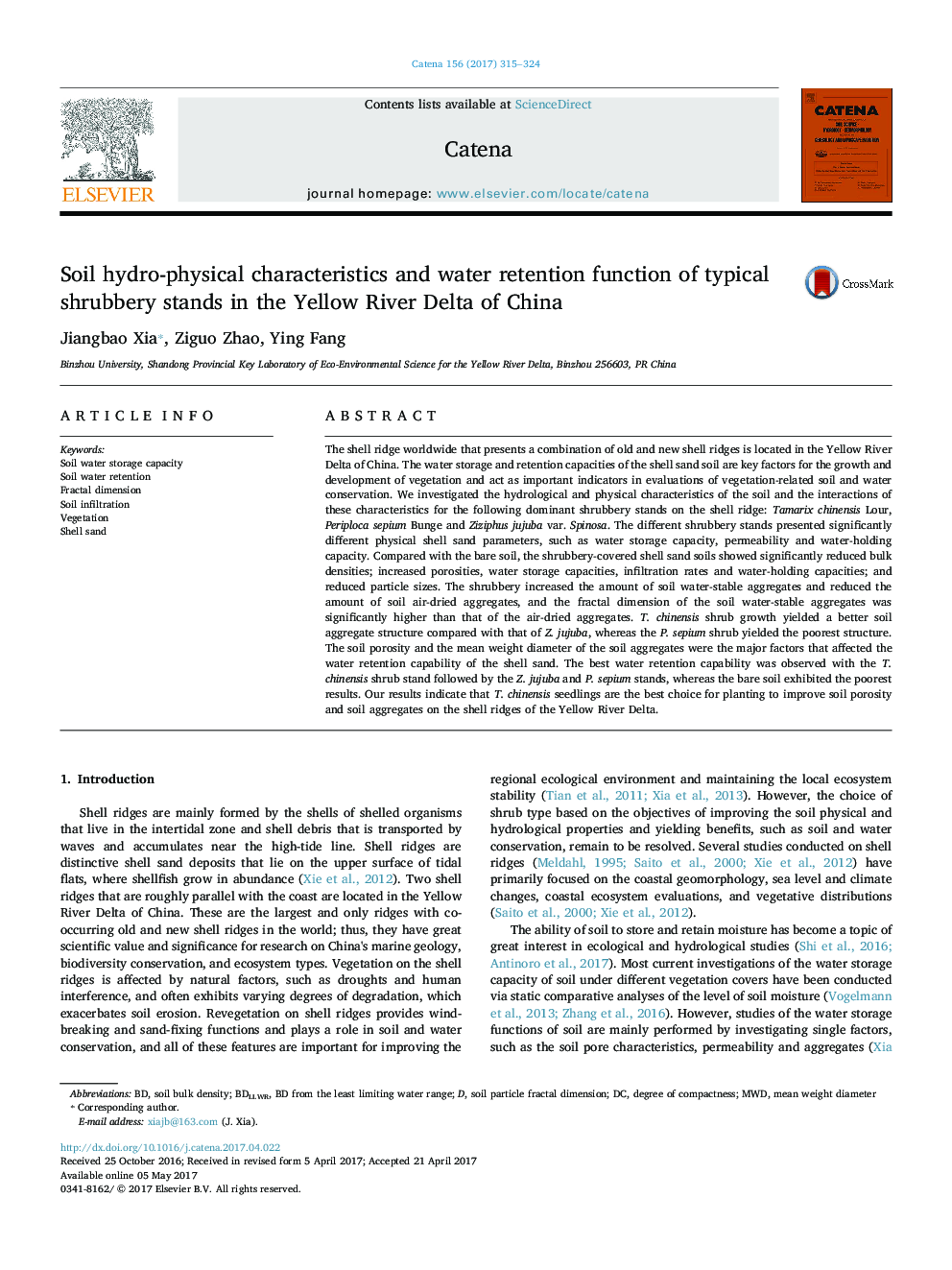| Article ID | Journal | Published Year | Pages | File Type |
|---|---|---|---|---|
| 5770007 | CATENA | 2017 | 10 Pages |
â¢Shrubberies improved the soil physical and hydrological structure on shell ridges.â¢Shrubbery growth improved the shell sand soil particle fractal dimension.â¢Soil porosity and MWD of soil mainly affected the water retention capability.â¢Shell sand contains more coarse particles and has a lower fractal dimension value.
The shell ridge worldwide that presents a combination of old and new shell ridges is located in the Yellow River Delta of China. The water storage and retention capacities of the shell sand soil are key factors for the growth and development of vegetation and act as important indicators in evaluations of vegetation-related soil and water conservation. We investigated the hydrological and physical characteristics of the soil and the interactions of these characteristics for the following dominant shrubbery stands on the shell ridge: Tamarix chinensis Lour, Periploca sepium Bunge and Ziziphus jujuba var. Spinosa. The different shrubbery stands presented significantly different physical shell sand parameters, such as water storage capacity, permeability and water-holding capacity. Compared with the bare soil, the shrubbery-covered shell sand soils showed significantly reduced bulk densities; increased porosities, water storage capacities, infiltration rates and water-holding capacities; and reduced particle sizes. The shrubbery increased the amount of soil water-stable aggregates and reduced the amount of soil air-dried aggregates, and the fractal dimension of the soil water-stable aggregates was significantly higher than that of the air-dried aggregates. T. chinensis shrub growth yielded a better soil aggregate structure compared with that of Z. jujuba, whereas the P. sepium shrub yielded the poorest structure. The soil porosity and the mean weight diameter of the soil aggregates were the major factors that affected the water retention capability of the shell sand. The best water retention capability was observed with the T. chinensis shrub stand followed by the Z. jujuba and P. sepium stands, whereas the bare soil exhibited the poorest results. Our results indicate that T. chinensis seedlings are the best choice for planting to improve soil porosity and soil aggregates on the shell ridges of the Yellow River Delta.
